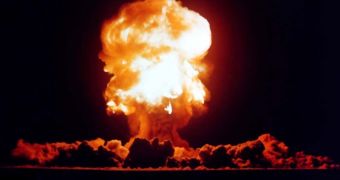Blowing stuff up is probably one of the most entertaining activities known to us. We just can't help it, it's in our human nature. Every year, millions of tons of fireworks and other pyrotechnic substances are being detonated for various purposes, and most of the remnant materials and byproducts of the reaction are either released into Earth's atmosphere or scattered on the soil. That wouldn't be such a big deal, however all the different chemicals associated with pyrotechnic substances are generally pollutants.
"No other application in the field of chemistry has such a positive association for the general population as fireworks," says Thomas Klap?tke from the University of Munich. On the other hand, pyrotechnical applications are significant polluters of the environment. Classical pyrotechnic compounds are well known as pollutants, that's why Klap?tke along with Georg Steinhauser from the University of Technology, Vienna, set up to finding new strategies that would combat the use of such substances.
Pyrotechnic substances are also routinely used in airbags, signal flares and even in the production of nanoporous metal foams, in order to act as hydrogen storage devices or catalysts. They are usually composed of an oxidizer and a reducing agent which, when lit, react violently, producing a rapid expansion of the original volume of material, thus an explosion. Depending on the purposes for which they are used, pyrotechnics may contain certain amounts of substances, such as binding agents, coloring agents and so on, which are also severe pollutants.
During the explosion phase, a mix of multiple heavy elements such as lead, barium chromium and others, is released into the atmosphere. Until now, not many people thought about the consequences, except maybe a handful of scientists working to find friendly alternatives. One of these would be the use of nitrogen-rich compounds, as opposed to classical pyrotechnic substances which rely on oxidation processes, nitrogen ones extract the energy of the blast from the high heats of formation released during substance decomposition.
Tetrazoles and tetrazines are just two of the candidates for the next generation of explosives. Flame coloring agents could be replaced by aminotetrazole that contains non-toxic elements such as lithium, sodium, cesium, to determine a broad range of colors. The only problem encountered with colors for now is that there is no substitute for green, but research is still on the way and is expected to produce a copper-based burning salt which will do the job. Additionally, nitrogen-rich pyrotechnics can also provide with enhanced color quality and burn smoke free reactions.

 14 DAY TRIAL //
14 DAY TRIAL //